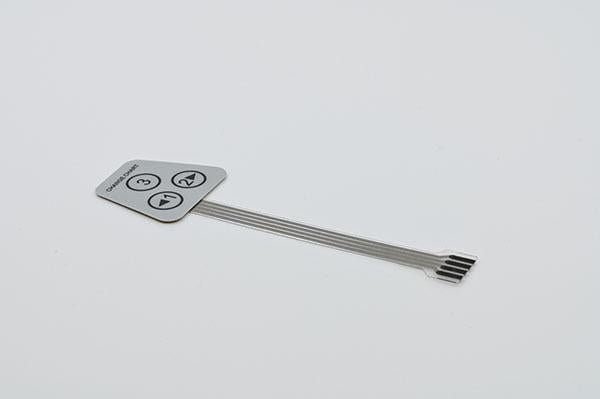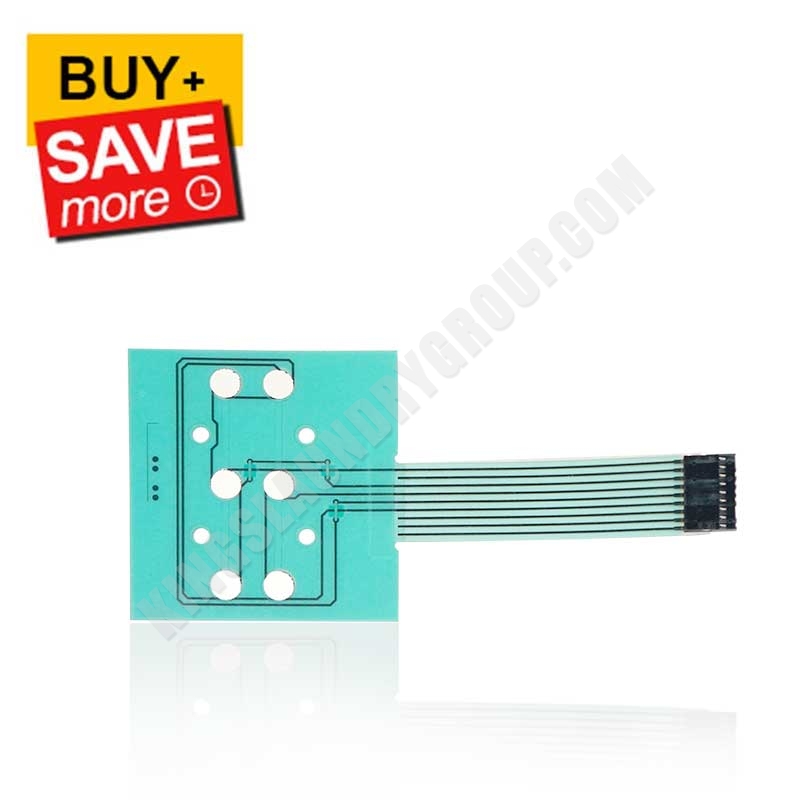Essential Functions to Seek When Picking a Membrane Switch
Essential Functions to Seek When Picking a Membrane Switch
Blog Article
Just How Membrane Layer Switches Over Add To the Toughness of Electronic Control Panels
Membrane switches play an essential function in boosting the resilience of digital control panels, largely through their multi-layered building which gives effective security versus ecological elements such as wetness and dust. This style not just lessens the risk of circuit damages and deterioration but likewise advertises ease of upkeep because of its smooth surface area. The lack of relocating components significantly minimizes the possibility of mechanical failures, making membrane switches over perfect for requiring applications. The ramifications of these functions prolong beyond mere security, increasing concerns regarding their wider effect on functionality and user experience.
Meaning of Membrane Layer Buttons

Membrane buttons are designed to be slim and light-weight, making them ideal for applications where space is limited. They can be produced in various forms, dimensions, and colors, providing versatility in design that fulfills visual and functional requirements. Furthermore, membrane layer switches can incorporate various innovations, such as tactile comments and LED signs, boosting individual experience.
As a result of their building, membrane buttons are often resistant to dirt, moisture, and basic wear, contributing to their durability in demanding environments. Their seamless style not only promotes simple cleansing however also decreases the danger of mechanical failing, making them a favored choice for producers seeking trustworthy individual interfaces in their electronic control panels.
Protection Versus Ecological Aspects
The style of membrane layer switches naturally provides a degree of protection versus numerous environmental aspects, which is essential for maintaining capability in difficult conditions - Membrane Switch. These switches are generally created with layers of versatile products that shield inner parts from wetness, dirt, and impurities. By encapsulating the wiring, membrane switches lessen the danger of brief circuits and corrosion, which can substantially impair efficiency
In addition, making use of robust adhesives and sealers during manufacturing improves their resistance to environmental obstacles. Membrane layer buttons can endure exposure to chemicals and solvents, making them ideal for industries such as food handling and health care, where health and sanitation are extremely important. Their seamless surface area style also protects against the build-up of dust and bacteria, promoting much easier cleaning and upkeep.
Temperature level changes are an additional environmental worry, and membrane layer buttons are engineered to operate effectively throughout a wide variety of temperature levels (Membrane Switch). This adaptability guarantees that control board remain operational in different setups, from industrial atmospheres to customer electronic devices
Effect On Individual Interaction
Individual communication with electronic control panels is significantly affected by the layout and capability of membrane switches. These switches supply a tactile interface that enhances the total user experience, enabling instinctive navigating and control. Their responsive nature ensures that users get instant responses upon activation, which is crucial for tasks requiring precision and effectiveness.
Additionally, the smooth surface area of membrane layer switches over facilitates easy cleaning and maintenance, promoting user confidence in the dependability of the user interface. This tidiness is especially crucial in settings where health is extremely important, such as clinical or food handling setups. In addition, the portable and lightweight design of membrane switches adds to the aesthetic charm of control panels, motivating individual interaction with a contemporary and streamlined appearance.
Furthermore, the integration of visual elements, such as printed icons and backlighting, helps individuals swiftly identify functions, minimizing the finding out contour connected with new tools. Because of this, customers can operate devices better, bring about raised performance and complete satisfaction. In summary, membrane layer switches play a critical duty in boosting customer communication by integrating performance, appearances, and convenience of usage, eventually bring about boosted functional effectiveness.
Layout Adaptability and Customization
Layout flexibility and customization are important aspects of membrane layer buttons, enabling manufacturers to tailor electronic control board to specific applications and individual needs. This adaptability enables the assimilation of different layout elements, such see here as colors, graphics, and structures, which can boost the visual charm and user interaction of the control board.
Membrane switches can be tailored in shapes and size, suiting a vast array of tools and applications, from industrial machinery to customer electronic devices. This flexibility makes certain that producers can produce instinctive interfaces that line up with customer assumptions and operational demands. Furthermore, the capacity to incorporate special attributes such as backlighting or tactile responses additionally enhances use, enabling an extra interactive experience.
Moreover, the production procedure for membrane changes sustains the quick prototyping of styles, enabling makers to iterate and fine-tune their principles quickly. This capability not only increases the development timeline but likewise makes sure that the last item meets specific practical and aesthetic standards.

Cost-Effectiveness and Durability
Cost-effectiveness and durability are substantial advantages of membrane switches, making them an appealing click this link option for producers and end-users alike. These switches are generally cheaper to generate than traditional mechanical buttons, this largely as a result of their streamlined manufacturing processes and the reduced variety of parts called for. This price benefit prolongs not only to preliminary manufacturing however also to long-lasting functional expenses, as membrane buttons commonly call for less upkeep and have a lower failure price.
Furthermore, the longevity of membrane layer changes adds to their general worth. Built from resilient products, they are resistant to ecological aspects such as moisture, dust, and chemicals, which can lead to early wear in various other button types. The absence of moving components reduces mechanical failing, allowing membrane layer switches to keep functionality over expanded periods.
This sturdiness is particularly valuable in applications needing regular performance under requiring conditions, such as medical tools and industrial tools. Eventually, the combination of cost-effectiveness and longevity makes membrane layer switches an economically practical choice for makers, providing trusted solutions that stand up to the test of time while enhancing monetary considerations.
Conclusion
In verdict, membrane switches considerably boost the durability of digital control panels through their durable construction and safety functions - Membrane Switch. Overall, membrane layer switches over represent a trusted and economical option for enhancing the longevity and performance of electronic control systems.
Report this page